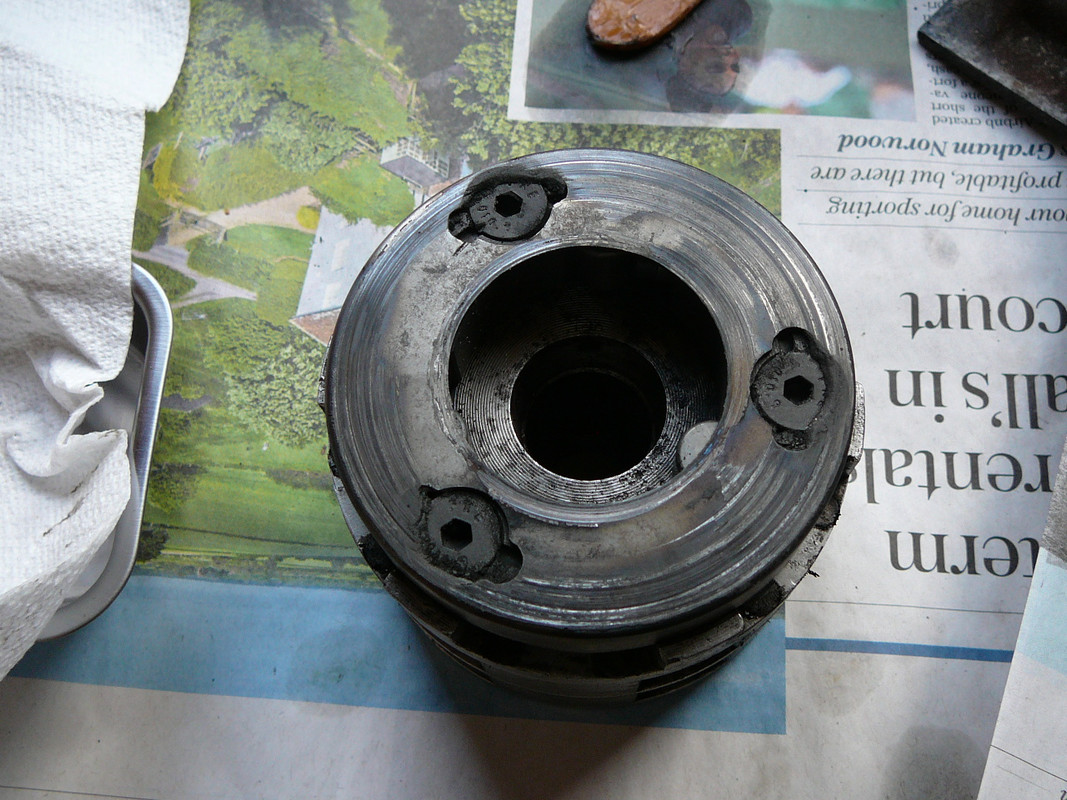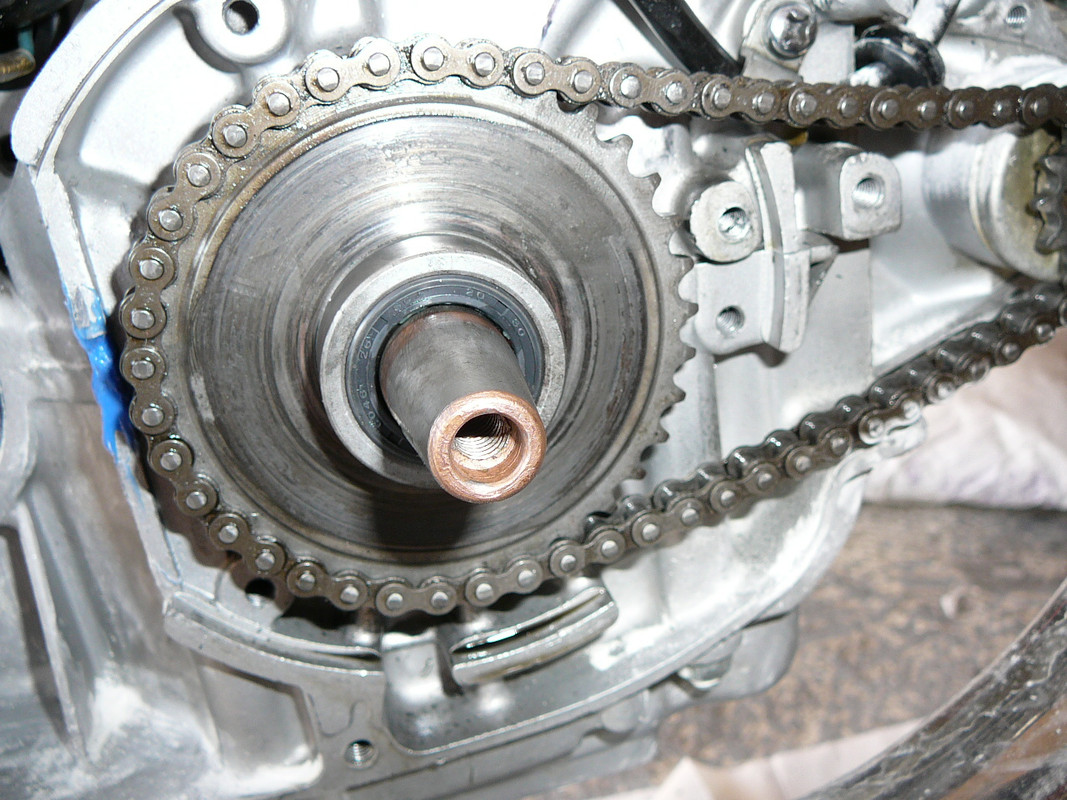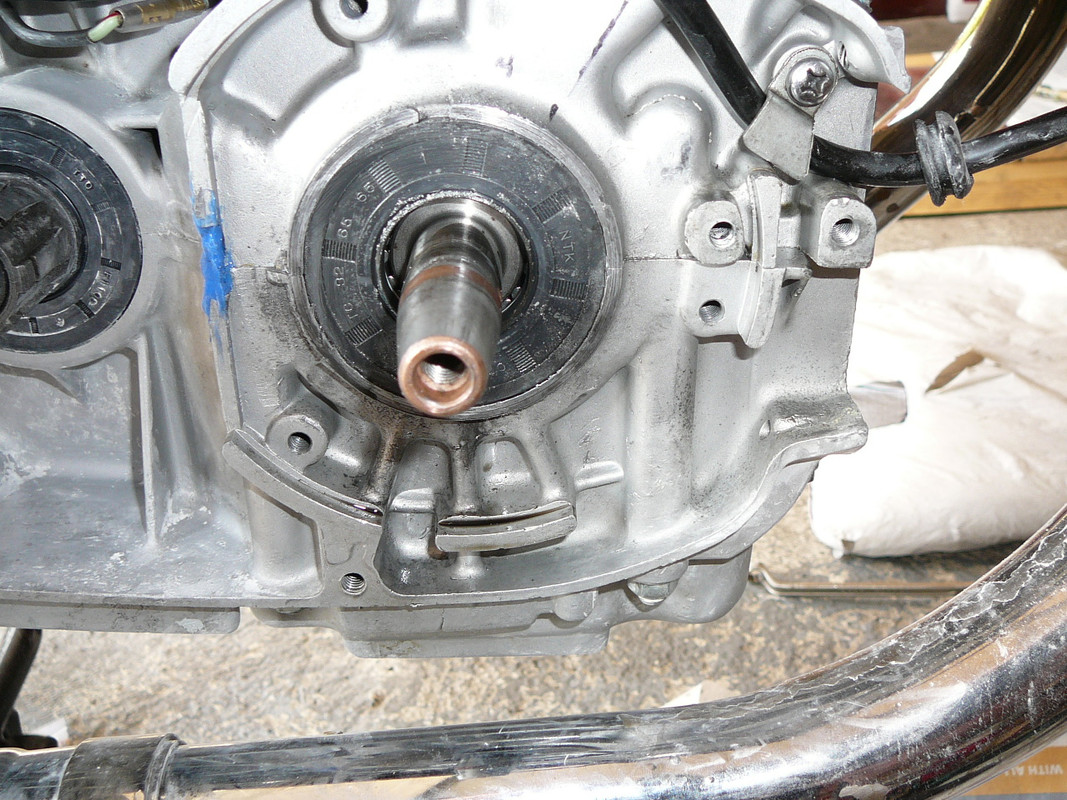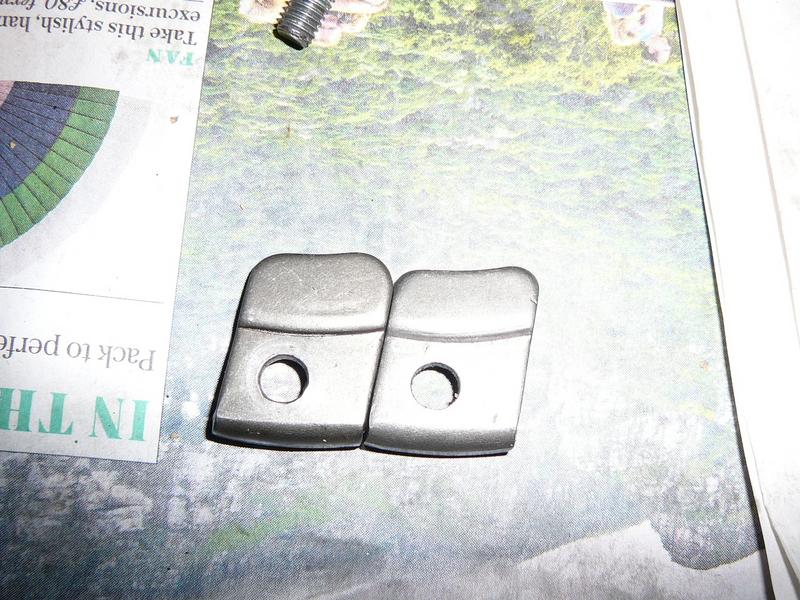Rebuilt engine seizedOil leakage.I've come across a couple of cases of oil leakage from the clutch pushrod with a very odd cause.
Behind the small seal in the end of the gearbox mainshaft (the clutch pushrod seal) is brass or bronze disc with a hole in the centre. This hole only needs to be just big enough for the clutch pushrod to slide through and holds the pushrod central, leaving the seal to its job in keeping the oil in! I've come across a couple of engines where the hole in the bronze disc was 1.5 to 2.00mm BIGGER than the clutch pushrod which then leaves the oil seal itself trying to hold the pushrod central and keep the oil on place, something it won't do, hence the leakage which even a new seal and pushrod won't cure. The disc can be checked simply by prizing out the seal but if the hole does prove to be oversize it will be an engine strip to change it.
I used talc to try and pin down the source of leakage as suggested (smells lovely!)
I ran it both in neutral and in gear with the sprocket removed. There seemed to be very little leakage from the main drive or clutch pushrod but a little bit from the outside of the main seal. Do people use any sealant around the seals? The clutch pushrod seal was harder to check as although you can push in a little way by hand you can not operate the clutch and watch at the same time but I will check the hole size as suggested by Dennis. What I did detect was that there seemed to be more leakage from behind the stator, so I removed and what I found was not good, it looks like the starter sprocket has been rubbing against the crankcases and the back of the stator. I know the starter clutch is OK and the sprocket is not turning when the engine is running. What I am not sure about is what determines the position of the sprocket relative to the crank /crankcases and the stator? Obviously I will have to strip down and investigate. Pictures attached .    Greg
The comment from rpr851r got me thinking.
When the crank was rebuilt the starter sprocket was also replaced but it did look slightly different to the old one. So I checked the keeper I had and compared it one from a newer bike. They are different and only compatible with early/late sprockets, the older one is longer which pushes against ridge on the newer sprocket so presumeably the cause of the sprocket rubbing against the crankcase. See picture, the older keeper is the longer one on the left.  Having said that I am still unsure what stops the sprocket rubbing (when it is not pushed by the keeper), The bearing holder is about 7.2mm in from the edge of the crankcase and the seal only 6.5mm thick so it is slightly recessed andstill a possibility of rubbing. Does the chain keep it aligned and stop any rubbing? Greg Something isn’t right there for sure and I don’t think the keeper difference is the issue. That’s a fair amount of damage to the case. I have 3 or 4 CB77 cases and don’t recall seeing that type of damage before. Others will need to confirm but generally I think the sprocket floats quite a bit and I am not aware of anything between the bearing and the sprocket to keep it spaced out. It almost looks to me like it was spinning while the engine was running at some point but I see you have ruled that out.
CL77
CT90 RE5 49 Harley RT3 Yamaha
| |||||||||||||||||||||||||||||||||||||||||||||||||||||||||||||||||||||


